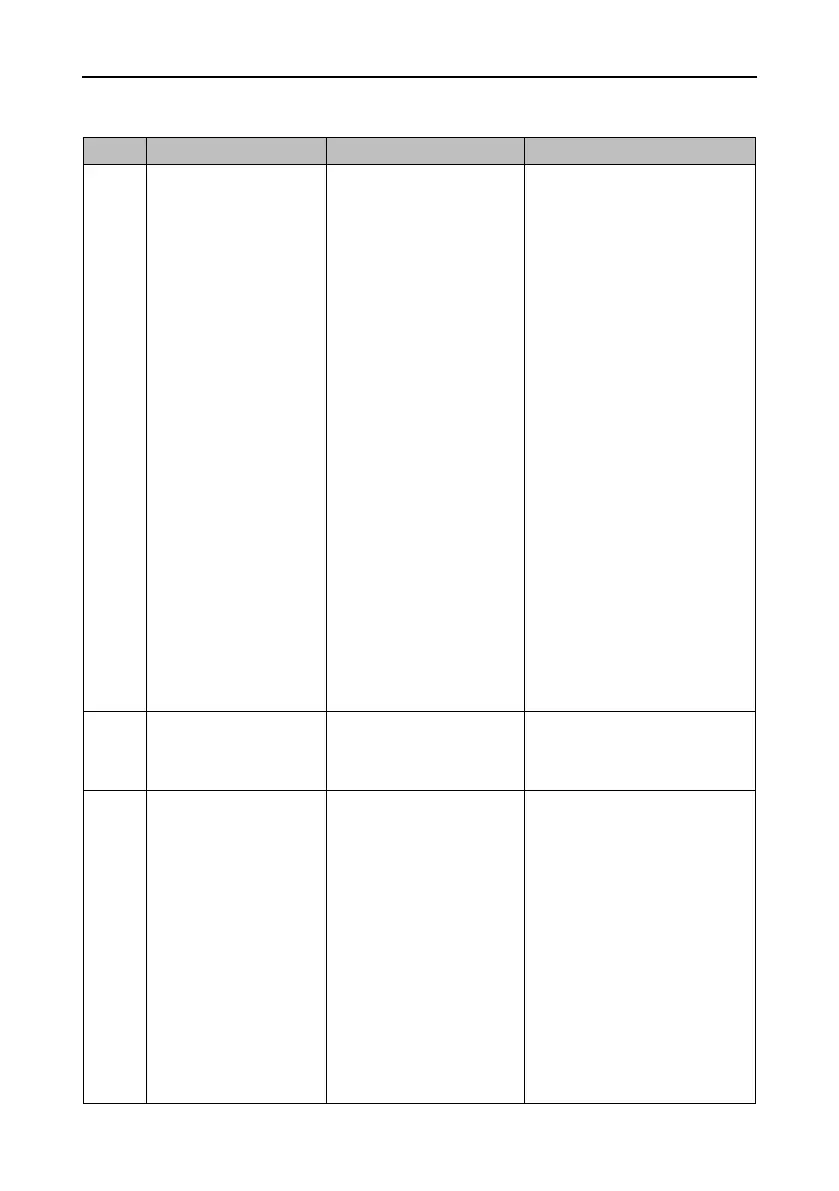DA180 series basic AC servo drive Fault handling
-259-
9.1 Servo drive faults and workarounds
The drive actual output
current exceeds the
specified value.
1. Drive fault (such as drive
circuit or IGBT fault).
2. Drive cables U, V, and W
are short connected, or drive
cables are grounded or
contacted improperly.
3. The motor breaks down.
4. Drive cables U, V, and W
are connected in reverse
phases.
5. Improper parameter
settings cause system
divergence.
6. The ACC/DEC time in the
start or stop process is too
short.
7. Instantaneous load is too
heavy.
1. Remove the motor cables and
then enable the drive. If the fault
persists, replace the drive.
2. Ensure the motor cables and
wiring are in good conditions.
3. Reduce the settings of P0.10
and P0.11 to reduce the
maximum output torque.
4. Increase the ACC/DEC time.
5. Replace the drive with a new
one with greater power.
6. Replace the motor.
Brake pipe fault (for
models of 7.5kW or
above)
The drive actual output
current exceeds the
specified value.
1. Drive fault (such as drive
circuit or IGBT fault).
2. Drive cables U, V, and W
are short connected, or drive
cables are grounded or
contacted improperly.
3. The motor breaks down.
4. Drive cables U, V, and W
are connected in reverse
1. Remove the motor cables and
then enable the drive. If the fault
persists, replace the drive.
2. Ensure the motor cables and
wiring are in good conditions.
3. Reduce the settings of P0.10
and P0.11 to reduce the
maximum output torque.
4. Increase the ACC/DEC time.
5. Replace the drive with a new
one with greater power.
6. Replace the motor.

